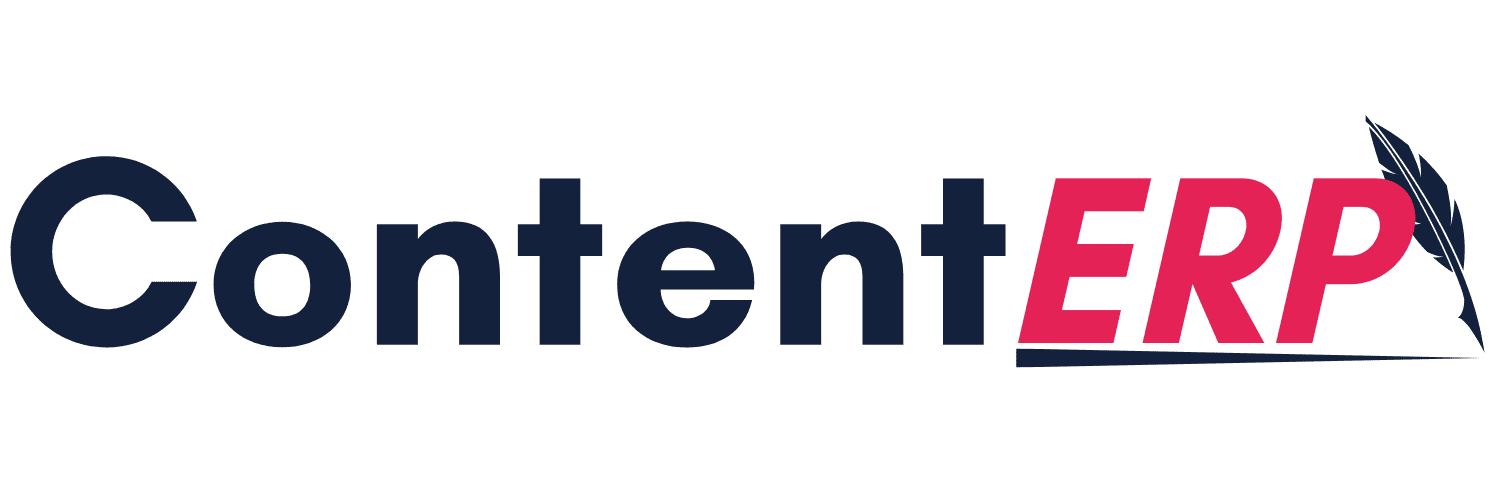by ContentERP | Oct 23, 2024 | Uncategorized
5 Must-Have Elements for a Stellar Newsletter, According to ContentERP
 In the depths of the rainforest, the lyrebird reigns as the master of communication. With an astonishing ability to mimic almost any sound—from the songs of other birds to the click of a camera shutter—this bird captivates the jungle with its vocal versatility. The lyrebird knows instinctively that to capture attention, it must be precise, unique, and engaging. Much like the lyrebird, businesses today need to captivate their audience’s attention, and one of the most powerful tools for doing so is the email newsletter.
In the depths of the rainforest, the lyrebird reigns as the master of communication. With an astonishing ability to mimic almost any sound—from the songs of other birds to the click of a camera shutter—this bird captivates the jungle with its vocal versatility. The lyrebird knows instinctively that to capture attention, it must be precise, unique, and engaging. Much like the lyrebird, businesses today need to captivate their audience’s attention, and one of the most powerful tools for doing so is the email newsletter.
But just as the lyrebird doesn’t sing random notes, an effective newsletter requires more than throwing content at an audience and hoping something resonates. Crafting a stellar newsletter is an art and a science, requiring precision and a deep understanding of your audience’s needs. With insights from ContentERP, we’ll explore the five must-have elements that will turn your email newsletter writing into a masterpiece.
Related: Maximizing Content Workflow with ContentERP: Everything You Need to Know
1. A Captivating Subject Line: Your First Impression
Much like the opening notes of the lyrebird’s song, the subject line is the first thing your audience hears. And just like in nature, first impressions matter. In the bustling jungle of inboxes, your subject line must rise above the cacophony. Think of it as your newsletter’s handshake—firm, confident, and impossible to ignore.
The key to crafting an irresistible subject line lies in clarity, curiosity, and relevance. Avoid clickbait—misleading your readers with a flashy subject line that doesn’t match your content is the fastest way to lose trust. Instead, offer a clear promise of what’s inside while piquing curiosity. For example, “Unlock the Secrets to Growing Your Audience in 2024” is direct but intriguing, giving readers a reason to click.
When in doubt, A/B testing is your friend. Experiment with different subject lines to discover what resonates most with your audience. ContentERP provides tools that allow you to track and analyze subject line performance, helping you refine your strategy over time.
2. Valuable, Engaging Content: The Heart of Your Newsletter
Like the rich, varied notes in the lyrebird’s song, your newsletter content should be a harmonious blend of value and engagement. The best newsletters don’t just push sales; they offer something meaningful to the reader—whether it’s actionable advice, thought leadership, or curated industry insights.
When crafting your content, ask yourself: What does my audience need? Focus on solving a problem or answering a question that is relevant to your readers. Whether you’re offering the latest trends in your industry or insider tips on a specific topic, the goal is to provide something they can’t easily find elsewhere.
Personify your brand. Don’t be afraid to inject a little personality and wit into your writing. Just as the lyrebird uses a unique mix of sounds to stand out, your voice should feel distinctive and authentic. Humor, when appropriate, can go a long way in creating a connection with your readers. For example, instead of saying “Stay updated with industry news,” try something like, “We scoured the web so you don’t have to—here’s what’s happening this week.”
3. A Clear Call to Action (CTA): Guiding the Next Step
The lyrebird may sing for the sake of attracting a mate, but for businesses, the goal is to inspire action. Once you’ve captivated your audience with valuable content, the next critical element is the call to action (CTA). Your readers need to know what to do next.
A successful CTA is clear, concise, and compelling. It should feel like a natural conclusion to the content they just consumed. Whether it’s “Download our free guide,” “Sign up for our webinar,” or “Shop our latest collection,” the CTA must be easy to find and easy to follow.
Placement is key—don’t hide your CTA at the bottom of your newsletter like a needle in a haystack. Instead, weave it seamlessly into the flow of your content. If your newsletter is longer, consider adding multiple CTAs at different points to ensure they’re seen. ContentERP’s tools allow you to track the performance of your CTAs, helping you optimize their placement and design for maximum engagement.
4. Mobile Optimization: Make It Accessible Everywhere
In today’s digital age, your audience could be reading your newsletter from anywhere—on a bus, in a café, or during a quick break between meetings. That’s why mobile optimization isn’t just a nice-to-have—it’s essential. Just as the lyrebird adjusts its song depending on its surroundings, your newsletter should adapt to different devices.
According to recent statistics, over 60% of email opens happen on mobile devices. If your newsletter isn’t optimized for mobile, you risk losing a significant portion of your audience. Ensure that your email template is responsive, meaning it adjusts automatically to fit the screen it’s being viewed on, whether that’s a smartphone, tablet, or desktop.
5. Consistent Branding: Build Trust and Recognition
The lyrebird’s ability to mimic sounds is extraordinary, but it also knows when to return to its own distinctive call. Similarly, while you may experiment with content and tone, your newsletter should always reflect your brand’s unique voice and aesthetic. Consistent branding builds trust and recognition, helping your audience feel more connected to your company over time.
This includes everything from your logo placement and color scheme to the tone and style of your writing. If your brand is fun and playful, let that personality shine through. If it’s more serious and professional, keep your tone aligned with those values. The goal is to create a seamless experience across all your communications so that when a reader opens your newsletter, they instantly recognize it as yours.
Conclusion: Crafting a Newsletter That Soars
 Imagine, for a moment, hearing the lyrebird’s mesmerizing song in the stillness of the rainforest. It’s captivating, distinctive, and impossible to ignore—much like a well-crafted newsletter. With the right elements in place—a compelling subject line, valuable content, clear CTAs, mobile optimization, and consistent branding—your newsletter has the potential to captivate your audience in the same way.
Imagine, for a moment, hearing the lyrebird’s mesmerizing song in the stillness of the rainforest. It’s captivating, distinctive, and impossible to ignore—much like a well-crafted newsletter. With the right elements in place—a compelling subject line, valuable content, clear CTAs, mobile optimization, and consistent branding—your newsletter has the potential to captivate your audience in the same way.
At the heart of it all is connection. Your newsletter is more than just a marketing tool—it’s a bridge between you and your readers, a way to build relationships and keep your brand top of mind.
As you take these lessons into your next newsletter, remember this simple truth: “A bird doesn’t sing because it has an answer, it sings because it has a song.” What story will your next newsletter tell?
Ready to craft a newsletter that resonates like the lyrebird’s call? Let ContentERP help you create content that sings. Sign up today and elevate your email newsletter writing to new heights.
Related: Managing Content Teams Efficiently with ContentERP: A Complete Guide
by ContentERP | Oct 23, 2024 | Uncategorized
Tired of SEO Dead Ends? Ask These 5 Questions to Discover Keyword Gems
 Imagine you’re digging for treasure, shovel in hand, heart racing with the thrill of what you might uncover. But after hours of effort, all you find are rocks. Frustrating, right? Now, imagine your SEO strategy as that treasure hunt. You dig through keyword data, create content, optimize, and still—nothing but dead ends. No traffic boost, no engagement. You feel like you’re chasing shadows.
Imagine you’re digging for treasure, shovel in hand, heart racing with the thrill of what you might uncover. But after hours of effort, all you find are rocks. Frustrating, right? Now, imagine your SEO strategy as that treasure hunt. You dig through keyword data, create content, optimize, and still—nothing but dead ends. No traffic boost, no engagement. You feel like you’re chasing shadows.
If this sounds familiar, you’re not alone. Many content creators face the same struggle. SEO is both an art and a science, and without the right tools or strategy, you can find yourself wasting time on keywords that don’t pay off. But what if the problem isn’t your content? What if you’re simply asking the wrong questions?
To uncover those hidden gems—keywords that drive traffic and convert—sometimes all it takes is a shift in perspective. Here are five essential questions that will steer you away from SEO dead ends and guide you to keyword gold.
Related: Maximize Your Content ROI With ContentERP: The Analytics Tools You Need for Success
1. Are You Targeting the Right Audience?
The first step in uncovering keyword gems is knowing who you’re talking to. You wouldn’t speak the same way to a group of seasoned professionals as you would to first-time learners. The same principle applies to keywords. If you’re not targeting the right audience, your keywords could be the digital equivalent of shouting into the void.
Ask yourself: Who is my ideal audience, and what do they search for? Dive deep into audience research. Tools like Google Analytics and social media insights can provide a goldmine of information about the demographics, interests, and behaviors of your audience. Once you understand who your audience is, you can align your keyword strategy to match their search patterns and intent.
2. Are You Following the Trends or Setting Them?
Chasing trending keywords can feel like running after a moving train—one that’s constantly speeding up. By the time you jump on, the opportunity may have already passed. So, here’s the real question: Are you just following the trends, or are you setting them?
Instead of relying solely on what’s trending now, think ahead. Predict emerging trends by examining industry news, following thought leaders, and leveraging tools like Google Trends. Keyword research platforms like ContentERP can help you uncover untapped search opportunities by analyzing the latest patterns in your niche. Don’t just react to trends—shape them.
3. Have You Considered Long-Tail Keywords?
Ah, long-tail keywords. They may not sound as glamorous as their broad-match counterparts, but don’t let their humble appearance fool you. These three to four-word phrases are like veins of gold running through a mountainside—hidden, but once uncovered, immensely valuable.
The question you need to ask is: Am I focusing too much on short, highly competitive keywords? While single-word keywords may bring in massive traffic, they often come with fierce competition. Long-tail keywords, however, are more specific, often less competitive, and deliver a higher conversion rate because they capture users with clear intent.
For example, instead of optimizing for “shoes,” try “best running shoes for flat feet” or “eco-friendly leather boots.” These phrases are specific and indicate that the searcher is closer to making a purchase decision. Long-tail keywords might not rake in as much traffic, but the quality of visitors is typically far superior.
4. Is Your Content Aligned with Search Intent?
Imagine trying to open a door with the wrong key. That’s what it feels like for users when they click on a search result and land on content that doesn’t match their intent. They quickly bounce back to the search results, leaving your page without a second thought.
Ask yourself: Is my content addressing the searcher’s intent? Keywords aren’t just words—they’re clues. When someone searches for “how to fix a leaky faucet,” they’re likely looking for a step-by-step guide, not a blog post about the history of plumbing. Similarly, when someone types “best restaurants in New York,” they want recommendations, not an essay on the culinary traditions of the city.
By ensuring your content matches the intent behind your chosen keywords—whether informational, transactional, or navigational—you’ll not only improve your SEO ranking but also keep visitors engaged longer.
5. Are You Analyzing and Updating Your Keywords Regularly?
SEO is not a one-and-done process. Search behavior changes over time, and keywords that once brought in traffic can lose their luster. It’s crucial to ask: Am I regularly analyzing and updating my keywords?
Like tending a garden, keyword strategies need constant care. You wouldn’t plant seeds and walk away, expecting flowers to bloom indefinitely. Similarly, keeping track of your keyword performance, identifying which ones are bringing in traffic, and adapting to new search trends are essential steps to staying relevant.
Tools like ContentERP make it easy to analyze keyword performance, offering insights into what’s working and where you need to pivot. The digital landscape is ever-evolving—don’t let your strategy stagnate.
Digging for Gold in the Digital Landscape
 Think back to that treasure hunt. Sometimes, the richest gold is buried just beneath the surface, waiting for the right questions to unearth it. SEO can feel like a labyrinth, but with the right mindset and approach, it’s less about blind digging and more about strategic discovery.
Think back to that treasure hunt. Sometimes, the richest gold is buried just beneath the surface, waiting for the right questions to unearth it. SEO can feel like a labyrinth, but with the right mindset and approach, it’s less about blind digging and more about strategic discovery.
By asking these five critical questions, you can stop wasting time on SEO dead ends and start uncovering the keyword gems that will drive meaningful traffic to your site. Remember, the right audience, a forward-thinking mindset, attention to long-tail keywords, alignment with search intent, and regular keyword analysis are the keys to unlocking SEO success.
As the saying goes, “The gold you seek is often in the question you’re afraid to ask.” Are you ready to strike gold with your SEO strategy?
If you’re tired of SEO dead ends, let ContentERP help you uncover those keyword gems with our cutting-edge content creation and optimization tools. Sign up today and take the guesswork out of SEO—because your treasure is just waiting to be found.
Related: The Ultimate Guide to Promoting Blog Posts on Social Media
by ContentERP | Oct 23, 2024 | Uncategorized
Got a Feedback Strategy? You Should—Your Audience Is Paying Attention
 Picture walking into a bustling café, the scent of fresh coffee hanging in the air, and the hum of conversation filling the space. You order your drink and take a seat by the window. Then, without warning, the barista approaches and asks, “How’s the coffee?” Now, imagine if your honest answer would shape the entire menu for weeks to come. That’s the power of feedback—transformative, immediate, and deeply influential.
Picture walking into a bustling café, the scent of fresh coffee hanging in the air, and the hum of conversation filling the space. You order your drink and take a seat by the window. Then, without warning, the barista approaches and asks, “How’s the coffee?” Now, imagine if your honest answer would shape the entire menu for weeks to come. That’s the power of feedback—transformative, immediate, and deeply influential.
In the digital world, your audience is that barista, waiting not just to hear what you think, but also to shape what you’ll consume next. The question is: Do you have a feedback strategy in place to harness this power? If you don’t, you might be missing out on crucial insights that can elevate your content, your brand, and your entire strategy.
Feedback isn’t just about hearing what people have to say; it’s about listening, learning, and evolving. And in a time when your audience’s voice carries more weight than ever, a robust feedback strategy could be the secret ingredient to long-term success.
Related: 10 Outstanding Content Writing Examples with Actionable Tips
Why Feedback Matters: It’s More Than a Two-Way Street
Too often, feedback is seen as a mere afterthought—something reactive, rather than proactive. But feedback, when properly harnessed, is more than just a two-way street. It’s a well-paved highway, constantly moving, allowing for ideas, impressions, and improvements to flow in both directions.
Think of your content as a living, breathing organism. Just like a plant, it needs light (engagement) and water (feedback) to grow and thrive. Without the right environment, it withers. Your audience’s feedback is the nourishment that can help your content not only survive but flourish.
So, how can you build a feedback strategy that doesn’t just gather dust in an inbox, but actively shapes the future of your content? Here are the essentials.
1. Ask the Right Questions, Get the Right Insights
Not all feedback is created equal. If you’re only asking surface-level questions like, “Did you enjoy this article?” you might be missing the deeper insights that could lead to meaningful improvements. To craft a winning feedback strategy, start by asking the right questions—those that dig beneath the surface.
Consider these:
-
What specific elements of the content did you find most valuable?
-
Were there any points where you lost interest or felt confused?
-
What topics would you like to see covered next?
These types of questions prompt your audience to reflect, analyze, and give you actionable insights. And once you’ve gathered this data, use it to shape your future content. ContentERP offers smart tools that allow you to easily gather and categorize feedback, ensuring you never miss a chance to improve.
2. Make Feedback Easy and Accessible
If feedback is the lifeblood of your strategy, then accessibility is the heart. You want to make it as simple as possible for your audience to provide their thoughts. But here’s the catch: they won’t go out of their way to do it unless you create seamless opportunities.
That’s why embedding quick surveys at the end of blog posts, using interactive polls in newsletters, and offering one-click feedback options on social media can make all the difference. By meeting your audience where they are, you’re showing them that their opinion matters.
And here’s a secret: people love to be heard. There’s an inherent satisfaction in knowing that your voice has an impact. By making feedback easy, you’re inviting your audience into the conversation, rather than leaving them on the sidelines.
3. Respond to Feedback (Yes, Even the Negative Kind)
Let’s face it: not all feedback will be glowing. But the truth is, negative feedback often offers the most room for growth. Ignoring it is like covering your eyes and ears while driving—you’re bound to hit a bump sooner or later.
The key is to respond thoughtfully and strategically. If someone points out a flaw in your content or suggests an improvement, acknowledge it. “Thank you for bringing this to our attention—we’ll make sure to consider it in our future posts” can go a long way in showing your audience that their input isn’t just acknowledged, it’s valued.
Even more impactful is when you implement their suggestions. Picture this: the smell of freshly baked bread wafting through your favorite bakery. You walk in, and the owner smiles, “We tried that recipe you suggested last week, and it’s now a bestseller!” When you act on feedback, you turn passive readers into engaged contributors who feel connected to your brand.
ContentERP can help you track feedback trends and offer suggestions for actionable changes, making the process of responding to and implementing feedback smoother than ever.
4. Make It a Continuous Process, Not a One-Time Event
Far too many businesses treat feedback like a checklist item—gather it once, and move on. But feedback isn’t a one-time thing; it’s an ongoing conversation.
By setting up regular opportunities to gather feedback—whether it’s through monthly surveys, quarterly content reviews, or real-time feedback tools—you ensure that your content stays relevant and aligned with your audience’s evolving needs.
Think of it like tuning an instrument. A guitarist doesn’t tune their strings once and expect them to stay perfect forever. They constantly adjust, fine-tune, and listen. Your feedback strategy should work the same way—constantly refining your content to match the rhythm of your audience.
5. Use Feedback to Spark Creativity and Innovation
The most successful content creators don’t just listen to feedback—they use it to push boundaries. Audience feedback can inspire fresh ideas, new formats, and innovative approaches that you might not have considered before.
Perhaps a recurring comment is that your articles are too long. This feedback might spark the idea to create bite-sized, digestible content—like a “quick tips” series or infographics. Or maybe your audience expresses interest in video content, prompting you to explore new media.
Feedback isn’t just about fixing what’s broken; it’s about discovering what’s possible.
Feedback Is the Pulse of Your Content
 Picture the sound of your audience’s voices—an ongoing hum of thoughts, preferences, and insights. It’s there, waiting for you to tune in. Can you hear it? It’s the pulse of your content, guiding you toward deeper engagement, stronger connections, and higher-quality work.
Picture the sound of your audience’s voices—an ongoing hum of thoughts, preferences, and insights. It’s there, waiting for you to tune in. Can you hear it? It’s the pulse of your content, guiding you toward deeper engagement, stronger connections, and higher-quality work.
As you refine your feedback strategy, remember that every comment, suggestion, and critique is an opportunity to grow. Don’t let the chance slip away.
At ContentERP, we understand the power of feedback. Our platform makes it easy to collect, analyze, and act on feedback, ensuring that your content evolves in perfect harmony with your audience’s needs. Ready to take your content strategy to the next level? Sign up for ContentERP today and start building a feedback-driven approach that will keep your audience engaged and your content ahead of the curve.
by ContentERP | Oct 23, 2024 | Uncategorized
Mastering Hashtags: A Guide to Using Them Effectively on Social Media Today
It was harvesting season, and as the farmers prepared to gather their crops, one thing became clear: the quality of their yield depended on how carefully they had sown their seeds. Some fields flourished with vibrant, abundant crops, while others, left untended, bore little fruit. In the digital landscape, content creators are much like those farmers, with hashtags as their seeds. Planted in the right soil at the right time, hashtags can yield an impressive harvest of engagement, visibility, and growth. But much like farming, success requires knowledge, precision, and a little bit of luck.
 In today’s fast-moving world of social media, hashtags are the tools that allow your content to grow and thrive amidst the competition. But how do you harness the power of social media hashtags effectively? How do you know which trending hashtags to use, and when? Let’s dig into the fertile ground of hashtag strategy to uncover the secrets of mastering hashtags and boosting your social media presence.
In today’s fast-moving world of social media, hashtags are the tools that allow your content to grow and thrive amidst the competition. But how do you harness the power of social media hashtags effectively? How do you know which trending hashtags to use, and when? Let’s dig into the fertile ground of hashtag strategy to uncover the secrets of mastering hashtags and boosting your social media presence.
Related: How to Plan, Create, and Promote Content with One Tool
What’s the Big Deal with Hashtags?
Hashtags are more than just keywords with a pound sign (#) in front of them. They are the lifeblood of social media discovery, the invisible threads connecting your content with users who care about it. In the crowded digital marketplace, hashtags serve as signposts, helping people find relevant content and guiding your message to the right audience. Without them, your content could get lost like a needle in a haystack.
Much like planting seeds in rich soil, the right hashtags help your content take root and spread. But scatter them randomly, and your efforts could be in vain. That’s why mastering the art of hashtag use is crucial for anyone serious about their social media strategy.
1. Sowing the Right Seeds: Choosing Relevant Hashtags
The first rule of effective hashtag use is relevance. Just as a farmer wouldn’t plant tropical fruit in a cold climate, you shouldn’t use hashtags that have no connection to your content. Hashtags should be chosen with precision, ensuring they align with the themes and topics of your posts. Relevant hashtags help you tap into communities that are genuinely interested in what you have to say.
A helpful tip? Perform research before you start planting your hashtags. Social media platforms like Instagram, Twitter, and LinkedIn allow you to search for hashtags and see how many times they’ve been used. Look for hashtags that are both relevant and popular, but avoid overly saturated ones where your post could drown in a sea of content.
For example, if you’re a fashion blogger posting about sustainable fashion, popular hashtags like #SustainableFashion or #EcoFriendlyStyle will help connect your content with an audience actively seeking those topics.
2. Harvesting Trends: Leveraging Trending Hashtags
Trending hashtags are the digital world’s version of a sudden rainstorm—potentially game-changing if you know how to make the most of them. Trending hashtags appear frequently on social media due to a surge in popularity. These hashtags represent what’s hot right now, whether it’s a global event, a social movement, or a viral meme.
Using trending hashtags can skyrocket your post’s visibility, placing your content front and center for a much larger audience. But beware: using irrelevant trending hashtags is like planting tomatoes in the middle of winter—not only will it not grow, but it could also make you look out of touch. Only use trending hashtags when they align with your content or brand message.
A quick way to check trending hashtags is by visiting the “Explore” or “Trending” sections on platforms like Twitter or Instagram. However, remember that relevance is key—jumping on trends that don’t fit your brand may backfire.
3. Finding the Balance: Quantity vs. Quality
How many hashtags should you use? It’s tempting to overload your posts with hashtags to cover all bases, but just as too much fertilizer can burn crops, too many hashtags can dilute your message and appear spammy. The goal is quality, not quantity.
Different platforms have different hashtag best practices. On Instagram, studies suggest that using between 5 to 10 relevant hashtags tends to yield the best results. On Twitter, where brevity is key, fewer hashtags (one or two) are more effective. LinkedIn, meanwhile, thrives with three to five well-chosen hashtags.
The trick is to find that sweet spot where your hashtags are enhancing your content without overwhelming it.
4. Cultivating Community: Using Hashtags to Build Engagement
Hashtags are more than just marketing tools—they’re conversation starters. They give you the chance to connect with communities of like-minded users who share your interests. Engage with these communities by not only using hashtags but also by interacting with posts that feature the same hashtags.
For instance, if you’re posting about mental health awareness using #MentalHealthMatters, take the time to comment on and share posts from other users using the same hashtag. This shows that you’re not just there to promote your own content—you’re genuinely part of the conversation.
Much like a farmer nurturing their crops, engaging with these communities can cultivate long-term relationships that foster trust, loyalty, and increased visibility.
5. Timing is Everything: When to Use Hashtags
Just like the seasons affect when a farmer plants their seeds, timing plays a crucial role in when you use hashtags. The best time to post with hashtags varies depending on the platform and your audience’s behavior.
For example, studies show that Instagram posts tend to perform best when shared mid-week, while Twitter posts gain more engagement during weekdays. Use analytics tools to monitor your audience’s activity and adjust your posting schedule accordingly.
By posting at the right time with the right hashtags, you’re giving your content the best chance to flourish.
Reaping the Rewards of Hashtags
 Mastering social media hashtags is a lot like farming—success doesn’t happen overnight, but with careful planning, a bit of patience, and the right strategies, you’ll start to see the fruits of your labor. Hashtags are your tools for growth, helping your content reach new audiences, drive engagement, and build a community around your brand.
Mastering social media hashtags is a lot like farming—success doesn’t happen overnight, but with careful planning, a bit of patience, and the right strategies, you’ll start to see the fruits of your labor. Hashtags are your tools for growth, helping your content reach new audiences, drive engagement, and build a community around your brand.
As the old saying goes, “You reap what you sow.” And in the world of social media, the seeds you plant today will determine the success you harvest tomorrow.
Ready to take your hashtag strategy to the next level? Let ContentERP be your guide in crafting content that not only engages but thrives. Sign up today, and let’s start planting the seeds for your digital success.
Related: Top 5 Strategies for Maximizing the Impact of Your Content Marketing
by ContentERP | Oct 23, 2024 | Uncategorized
5 Newsletter Best Practices for Optimized Content, From the Experts at ContentERP
Once upon a time, newsletters were simple. You’d draft up some text, throw in a link or two, and send it out into the digital ether, hoping it would land in inboxes like a message in a bottle. But those days are long gone. In today’s fast-paced digital world, newsletters have evolved into powerful marketing tools that demand precision, strategy, and creativity. Without the right approach, your newsletter could vanish into the abyss of unopened emails, joining the ranks of forgotten messages.
 But fear not! The experts at ContentERP are here to guide you through five best practices that will ensure your newsletters not only get opened but also engage, inform, and convert. It’s time to take your content strategy to the next level and make every newsletter count.
But fear not! The experts at ContentERP are here to guide you through five best practices that will ensure your newsletters not only get opened but also engage, inform, and convert. It’s time to take your content strategy to the next level and make every newsletter count.
Related: How to Boost Traffic by Automating Your Content Flow: A Guide with a Twist
1. Craft Irresistible Subject Lines
Imagine this: Your audience is swiping through dozens of emails, each clamoring for attention like a street vendor in a crowded marketplace. The first thing they see? Your subject line. This is your moment to shine, and if you miss it, your email is headed straight for the dreaded trash folder.
Think of your subject line as a front door—it needs to be inviting enough for readers to want to step inside. The key is to keep it short (under 50 characters), make it intriguing, and avoid being too salesy. Use humor, questions, or even a touch of mystery to pique curiosity. Something like “Unlock the Secret to Boosting Your Sales” or “Are You Missing Out on These Marketing Trends?” will do the trick.
And don’t forget to A/B test your subject lines. What resonates with one segment of your audience may fall flat with another. Let ContentERP’s tools help you test, analyze, and refine your approach so you can consistently hit that sweet spot.
2. Focus on Personalization
There’s something magical about seeing your own name in an email, isn’t there? It’s as if the sender is speaking directly to you. That’s the power of personalization—and it goes far beyond just using a first name.
With personalized newsletters, you’re not simply addressing readers; you’re engaging them. Tailor your content based on user behavior, interests, and demographics. Segment your audience so that the content they receive is relevant and specific to their needs.
For instance, if you know a segment of your audience is interested in SEO, send them updates about the latest SEO strategies, tips, or tools—like those found on ContentERP. The more targeted your content, the more likely readers are to stay engaged, and the more they’ll trust you as a valuable source of information.
3. Use Clean, Engaging Design
If your subject line is the front door, then your email’s design is the interior décor. Imagine walking into a cluttered, dimly lit room—you’d want to leave as quickly as possible, right? That’s exactly what happens when your newsletter is poorly designed.
Clean, simple, and visually appealing newsletters make it easy for readers to digest your content. Stick to a single-column layout, with plenty of white space and clear headings. Don’t overwhelm readers with blocks of text—break it up with engaging visuals, bullet points, and even the occasional GIF or meme (if it suits your brand’s tone).
Mobile optimization is another must. More than half of emails are opened on mobile devices, so make sure your newsletter looks just as good on a smartphone as it does on a desktop. Luckily, ContentERP’s design tools can help you build beautiful, responsive newsletters that capture attention, no matter where they’re opened.
4. Create a Clear Call to Action (CTA)
Your newsletter has done its job—engaged the reader, shared valuable information—but now, what’s next? This is where a clear, compelling call to action (CTA) comes into play.
Your CTA should be direct and concise, guiding readers toward a specific action, whether it’s reading your latest blog post, downloading an e-book, or signing up for a demo. And remember, not all CTAs need to be about sales—sometimes, you just want to build a relationship. Invite readers to share their thoughts, follow you on social media, or participate in a webinar.
It’s also important to make your CTA visually stand out. Use contrasting colors and actionable language like “Discover More,” “Get Started,” or “Sign Up Now.” At ContentERP, we’ve mastered the art of crafting compelling CTAs that convert, and we’re ready to help you do the same.
5. Test and Analyze for Continuous Improvement
Here’s a secret that many forget: The best newsletters are constantly evolving. What worked last month may not work today, and that’s okay—because you have the power to test, adjust, and improve.
By regularly analyzing open rates, click-through rates, and conversions, you can see what’s resonating with your audience and what isn’t. Test different subject lines, designs, content formats, and even the timing of your sends. Each tweak brings you closer to a perfectly optimized newsletter.
With ContentERP, you can track performance metrics in real-time, ensuring you’re always a step ahead of your competitors. Armed with this data, you’ll be able to make informed decisions that drive engagement and growth.
Conclusion: Crafting Newsletters That Delight
 Now, picture this: The soft glow of a laptop screen, the rhythmic tap of fingers on keys, and the sense of anticipation as you hit “send” on your latest newsletter. You’ve done the work—crafted the perfect subject line, personalized your message, optimized your design, and laid out a clear path for readers to follow. As your email sails through cyberspace, you can almost feel the excitement of those who will open it, click through, and engage with your brand.
Now, picture this: The soft glow of a laptop screen, the rhythmic tap of fingers on keys, and the sense of anticipation as you hit “send” on your latest newsletter. You’ve done the work—crafted the perfect subject line, personalized your message, optimized your design, and laid out a clear path for readers to follow. As your email sails through cyberspace, you can almost feel the excitement of those who will open it, click through, and engage with your brand.
Newsletters aren’t just messages—they’re your voice, your connection to an audience who looks to you for information, guidance, and solutions. And with these five best practices in mind, you’re on your way to building a newsletter strategy that doesn’t just exist in inboxes but truly stands out.
But here’s the thing: you don’t have to navigate this journey alone. With ContentERP, you have all the tools you need to create newsletters that resonate, convert, and build lasting relationships. Whether you’re just starting or looking to refine your current approach, ContentERP can help you design, deliver, and optimize content that will elevate your brand.
Ready to take your newsletters to the next level? Sign up for ContentERP today and watch your content soar to new heights!
by ContentERP | Oct 23, 2024 | Uncategorized
How Can These 5 SEO Content and Design Tips Improve Your Ranking in SERPs?
 Picture this: You’ve poured hours into creating the perfect website content. It’s thoughtful, detailed, and exactly what your audience needs. Yet, somehow, it remains buried on the second or third page of Google search results—a place where even the most diligent users rarely venture. What’s missing? Why isn’t your carefully crafted content climbing the coveted ladder to the top of search rankings?
Picture this: You’ve poured hours into creating the perfect website content. It’s thoughtful, detailed, and exactly what your audience needs. Yet, somehow, it remains buried on the second or third page of Google search results—a place where even the most diligent users rarely venture. What’s missing? Why isn’t your carefully crafted content climbing the coveted ladder to the top of search rankings?
The truth is, high-quality content alone isn’t enough. It’s like throwing a party without sending out invitations. You might have the best offerings, but if no one knows you exist, you’ll be celebrating alone. To break through the noise and gain the visibility your content deserves, your SEO and website design need to work hand-in-hand like a perfectly choreographed dance. And when they do, the results can be magical.
So, how exactly do you make sure your content gets the attention it deserves? Here are five crucial SEO content and design tips to help you boost your ranking in search engine results pages (SERPs), enhance your user experience, and capture the spotlight you’ve been seeking.
Related: How to Boost Traffic by Automating Your Content Flow: A Guide with a Twist
1. Master the Art of Keyword Placement—But Don’t Overdo It
Keywords are like breadcrumbs leading Google to your site. But just like too much salt can ruin a dish, overstuffing your content with keywords can do more harm than good. The key is to strike the perfect balance: carefully selecting keywords that resonate with your target audience, then weaving them into your content in a way that feels natural, rather than forced.
Start by identifying a primary keyword for each piece of content, something highly relevant to your subject matter. Then, use variations of that keyword (long-tail keywords) to catch a broader range of search queries. Incorporating them into your title, headers, and meta description is crucial, but make sure they flow with the context. Remember, search engines may be bots, but they reward writing that sounds like it was written by a human, for a human.
Pro Tip: Use ContentERP to track high-performing keywords for your niche. The AI-powered platform analyzes search trends and provides suggestions that are both relevant and impactful—taking the guesswork out of SEO.
2. Make Your Design Mobile-Friendly—Because Google Says So
It’s no secret that mobile traffic now dominates the digital space. More than half of all internet traffic comes from mobile devices, and Google’s algorithms prioritize mobile-friendly websites when determining search rankings. This means that if your site looks clunky or performs poorly on mobile, you’ll likely be sent to the back of the line.
What can you do? Start by using responsive design, ensuring that your content automatically adjusts to different screen sizes and devices. Clean layouts, fast load times, and touch-friendly navigation are essential elements of mobile optimization.
Think of mobile users as VIP guests at your SEO party—if you don’t cater to them, they won’t stick around for long. And neither will Google.
3. Focus on Page Load Speed—Don’t Keep Visitors (or Google) Waiting
There’s nothing more frustrating than waiting for a webpage to load. It’s like standing in front of a closed door, knocking repeatedly, only to get no response. In fact, most users will abandon a site that takes longer than three seconds to load, and Google knows this. Page speed is a critical ranking factor in SEO.
To boost your speed, minimize the size of your images, use caching, and limit the number of plugins on your site. Compress your website’s code and utilize Content Delivery Networks (CDNs) to ensure that your content is delivered as quickly as possible.
Remember, a slow-loading website doesn’t just harm your search rankings; it also irritates your visitors. And irritated visitors rarely return.
Related: Why ContentERP is the Best Choice for Startups Looking to Build Their Brand
4. Write for Humans, Optimize for Search Engines
Let’s face it—nobody wants to read content that sounds like a robot wrote it. Yet, in the pursuit of SEO glory, too many content creators fall into the trap of writing for algorithms instead of actual people. Here’s the secret: you can do both.
By crafting engaging, informative, and well-structured content that delivers real value to readers, you naturally increase your SEO performance. Search engines have grown smarter—they recognize when users are spending more time on a page and reward that engagement with better rankings.
Break up your content with subheadings, bullet points, and images to make it more readable. And don’t forget internal linking, which not only improves SEO but also keeps visitors exploring your site longer.
Pro Tip: Analyze your content’s readability score and SEO compatibility in real time, so you’re never forced to choose between appealing to readers and search engines.
5. Optimize Your Metadata—The Unsung Hero of SEO
You wouldn’t publish a novel without a title or book cover, right? Think of your metadata—your title tags, meta descriptions, and image alt texts—as your content’s cover letter. While not visible to readers on the page, metadata is one of the first things search engines see, and it helps them determine the relevance of your content.
Your title tag should include your primary keyword, be no longer than 60 characters, and accurately describe what your page is about. Meanwhile, your meta description—those 160 characters below your title tag—should be written to entice readers, as it often determines whether someone clicks on your link or skips it.
Pro Tip: ContentERP’s AI-driven platform can auto-generate metadata optimized for both search engines and readers, saving you time while ensuring your site is always performing at its best.
Your Content’s Journey to the Top Starts Now
 Picture your content as a finely tuned orchestra—each piece working in harmony to create a symphony that resonates with both users and search engines. When your SEO strategy is in sync with your website design, the results can be transformative. Suddenly, you’re not just visible—you’re the main attraction, topping search rankings and driving more traffic than ever before.
Picture your content as a finely tuned orchestra—each piece working in harmony to create a symphony that resonates with both users and search engines. When your SEO strategy is in sync with your website design, the results can be transformative. Suddenly, you’re not just visible—you’re the main attraction, topping search rankings and driving more traffic than ever before.
And here’s the most exciting part: you don’t have to navigate this SEO journey alone. ContentERP is the conductor that will help orchestrate your content’s rise to the top. With its AI-driven tools, intuitive design, and strategic insights, you’ll never feel lost in the chaotic world of SEO again.
It’s time to unlock the full potential of your content. Sign up for ContentERP today, and watch your search rankings soar—one optimized page at a time.
Related: How to Maximize Content Promotion with Fewer Resources
In the depths of the rainforest, the lyrebird reigns as the master of communication. With an astonishing ability to mimic almost any sound—from the songs of other birds to the click of a camera shutter—this bird captivates the jungle with its vocal versatility. The lyrebird knows instinctively that to capture attention, it must be precise, unique, and engaging. Much like the lyrebird, businesses today need to captivate their audience’s attention, and one of the most powerful tools for doing so is the email newsletter.
Imagine, for a moment, hearing the lyrebird’s mesmerizing song in the stillness of the rainforest. It’s captivating, distinctive, and impossible to ignore—much like a well-crafted newsletter. With the right elements in place—a compelling subject line, valuable content, clear CTAs, mobile optimization, and consistent branding—your newsletter has the potential to captivate your audience in the same way.
